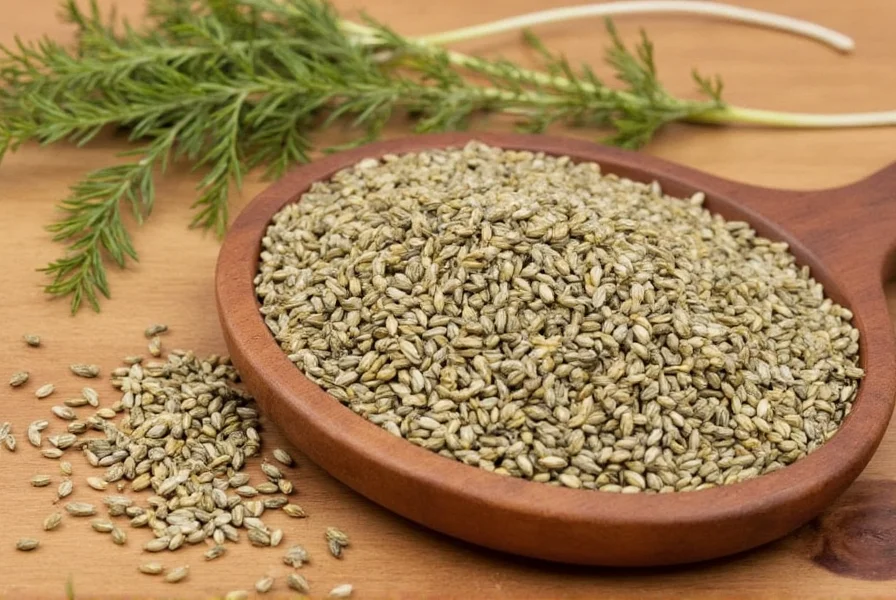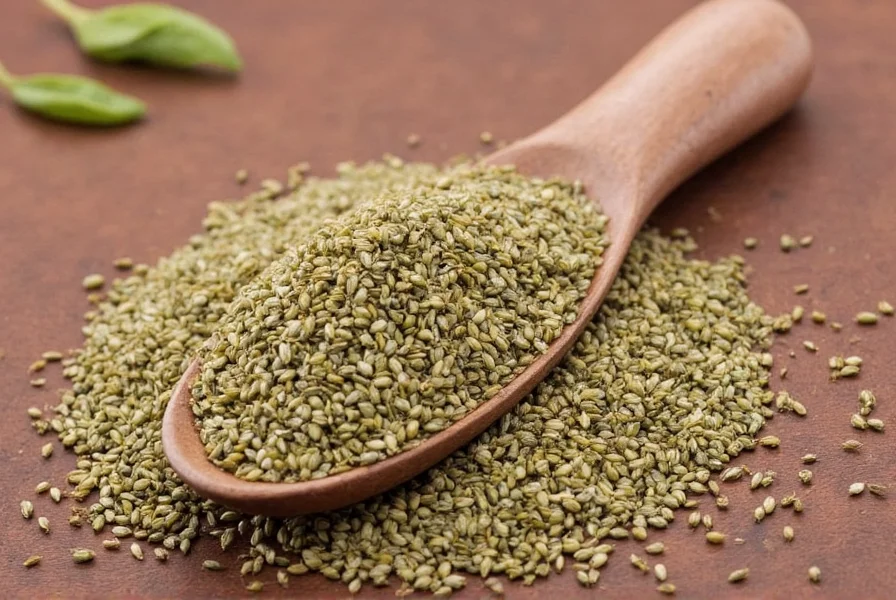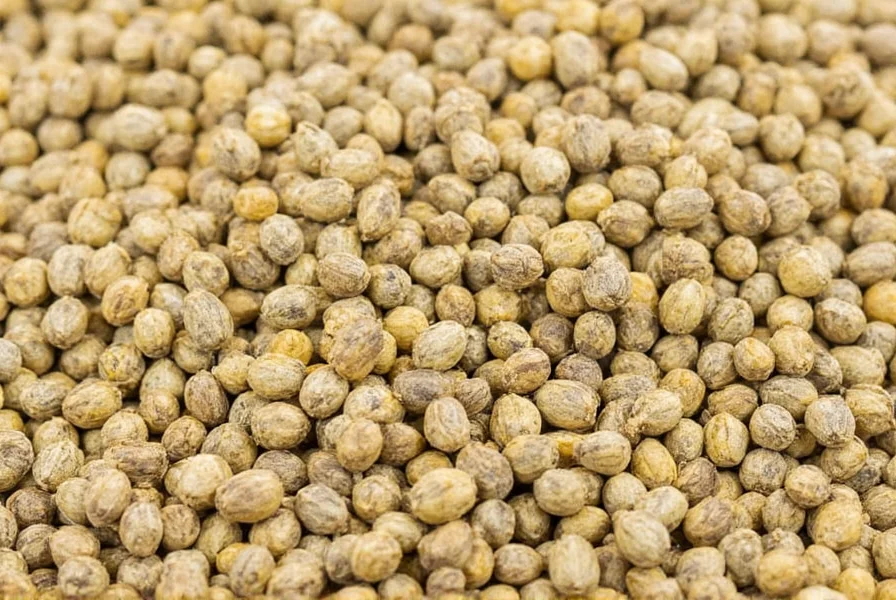The best immediate substitutes for fennel seeds are anise seeds (use 3:4 ratio), dill seeds (1:1 ratio), or caraway seeds (1:1 ratio). For most savory dishes, anise provides the closest licorice-like flavor profile, while dill works better in fish dishes and salads. When replacing fennel seeds in Italian sausage recipes, a blend of caraway and a pinch of sugar delivers optimal results.
Understanding how to effectively replace fennel seeds requires knowledge of their distinctive sweet, licorice-like flavor with subtle citrus undertones. This aromatic spice plays a crucial role in Mediterranean, Indian, and Middle Eastern cuisines, making suitable substitutions essential when it's unavailable or when accommodating dietary preferences.
Understanding Fennel Seeds' Flavor Profile
Fennel seeds contain anethole, the same compound found in anise and star anise, which creates their characteristic sweet licorice taste. Unlike anise, fennel offers a more delicate, slightly floral profile with citrus notes. When seeking fennel seed alternatives, consider both the intensity of flavor and the culinary context. The seed's versatility across sweet and savory applications means substitution strategies vary significantly depending on whether you're preparing Italian sausage, Indian curry, or Scandinavian baked goods.
Top Substitutes for Fennel Seeds
Not all substitutes work equally well across different recipes. The following comparison helps identify the optimal replacement based on your specific cooking needs:
| Substitute | Best For | Ratio | Flavor Notes |
|---|---|---|---|
| Anise seeds | Italian sausage, breads, desserts | 3:4 (less substitute) | Stronger licorice flavor, use sparingly |
| Dill seeds | Fish dishes, salads, pickling | 1:1 | More herbaceous, less sweet |
| Caraway seeds | Rye bread, sauerkraut, German dishes | 1:1 | Earthy, less sweet, similar texture |
| Star anise | Chinese five-spice, braises, stews | 1 star = 1 tsp seeds | Intense licorice, remove before serving |
| Fennel pollen | Finishing dishes, sauces, dressings | 1:3 (less pollen) | Concentrated fennel flavor, expensive |
Context-Specific Substitution Strategies
Successful replacement of fennel seeds depends heavily on the culinary application. Consider these context-specific approaches when you need to replace fennel seeds in specific dishes:
Italian Cuisine Substitutions
When replacing fennel seeds in Italian sausage recipes, combine caraway seeds with a pinch of sugar to mimic fennel's sweet-earthy profile. For tomato-based pasta sauces, dill seeds provide a suitable alternative without overwhelming the dish. In biscotti and other Italian baked goods, anise seeds work best but should be used at a 3:4 ratio to prevent excessive licorice flavor.

Indian and Middle Eastern Dishes
For Indian curries and spice blends like panch phoron, use equal parts dill and caraway seeds when you need to replace fennel seeds. In Middle Eastern za'atar blends, a combination of dried thyme and a small amount of anise creates a reasonable approximation. When substituting in Persian rice dishes, add a pinch of ground coriander to caraway seeds to replicate fennel's citrus notes.
Baking Applications
Fennel seeds appear in various breads and pastries across European cuisines. When replacing fennel seeds in Scandinavian cardamom buns, increase the cardamom by 25% and add a tiny pinch of anise. For Italian pizzelle, use anise seeds at a 3:4 ratio. In Jewish rye bread, caraway remains the superior substitute when you need to replace fennel seeds, as these spices often appear together in traditional recipes.
Measurement Conversion Guide
Precise measurement matters when replacing fennel seeds. Stronger substitutes like anise require reduced quantities:
- Anise seeds: Use 3/4 teaspoon for every 1 teaspoon of fennel seeds
- Star anise: 1 whole star equals approximately 1 teaspoon of fennel seeds
- Fennel pollen: 1/4 teaspoon replaces 1 teaspoon of fennel seeds
- Dill seeds: Equal measurement in most savory applications
Ineffective Substitutes to Avoid
Certain spices make poor replacements when attempting to replace fennel seeds. Avoid using:
- Cumin alone (lacks sweetness, too earthy)
- Fennel fronds (insufficient flavor concentration)
- Fennel bulb (completely different texture and mild flavor)
- Plain sugar (addresses sweetness but misses herbal notes)
These alternatives fail to capture fennel's unique flavor profile and may significantly alter your dish's intended taste.
Creating Custom Fennel Seed Blends
For optimal results when you need to replace fennel seeds, consider creating custom blends tailored to your specific recipe:
- Italian sausage blend: 3 parts caraway + 1 part anise + small pinch of sugar
- Indian curry blend: 2 parts dill seeds + 1 part coriander + 1/2 part cumin
- Scandinavian baking blend: 2 parts cardamom + 1 part anise + 1/4 part cinnamon
Toast the blended spices lightly before use to enhance their aromatic qualities. Store any unused blend in an airtight container away from light for up to three months.
When Substitution Isn't Possible
Certain traditional recipes rely so heavily on fennel seeds that substitutes significantly alter the dish. Examples include Italian sausage, Tuscan fish soup (cioppino), and some versions of garam masala. In these cases, consider:
- Seeking specialty grocery stores that carry fennel seeds
- Ordering whole fennel seeds online for better flavor retention
- Using fresh fennel bulb as a partial substitute in liquid-based dishes

Frequently Asked Questions
Can I use fennel powder instead of fennel seeds?
Yes, but use half the amount of fennel powder compared to whole seeds, as ground spices have more concentrated flavor. For every teaspoon of fennel seeds, use 1/2 teaspoon of fennel powder. Keep in mind that pre-ground fennel loses potency faster than whole seeds.
What's the best substitute for fennel seeds in sausage making?
The optimal substitute for fennel seeds in Italian sausage is a blend of caraway seeds and a small amount of sugar. Use equal parts caraway to replace fennel seeds, plus 1/8 teaspoon of sugar per tablespoon of seeds. This combination replicates fennel's sweet-earthy profile essential to traditional sausage recipes.
How do I replace fennel seeds in baking recipes?
When replacing fennel seeds in baking, anise seeds work best but should be used at a 3:4 ratio (3/4 teaspoon anise for every teaspoon of fennel seeds). For Scandinavian cardamom buns, increase cardamom by 25% and add a tiny pinch of anise. In biscotti, the anise substitution works well, but reduce by 25% to prevent overwhelming licorice flavor.
Can I substitute fresh fennel for fennel seeds?
Fresh fennel bulb makes a poor direct substitute for fennel seeds due to significantly different flavor concentration. However, in soups and stews, you can use 1/4 cup of chopped fennel bulb plus 1/8 teaspoon of anise seeds to replace 1 teaspoon of fennel seeds. The bulb provides texture while the anise contributes the necessary licorice notes.
What's the difference between anise and fennel seeds when substituting?
Anise seeds have a stronger, more intense licorice flavor than fennel seeds and lack fennel's subtle citrus notes. When substituting anise for fennel seeds, use 25% less anise to prevent overpowering your dish. Anise works better in sweet applications, while fennel's milder profile suits both sweet and savory dishes. In Italian sausage, anise alone creates an artificial flavor, making caraway a better substitute.











 浙公网安备
33010002000092号
浙公网安备
33010002000092号 浙B2-20120091-4
浙B2-20120091-4